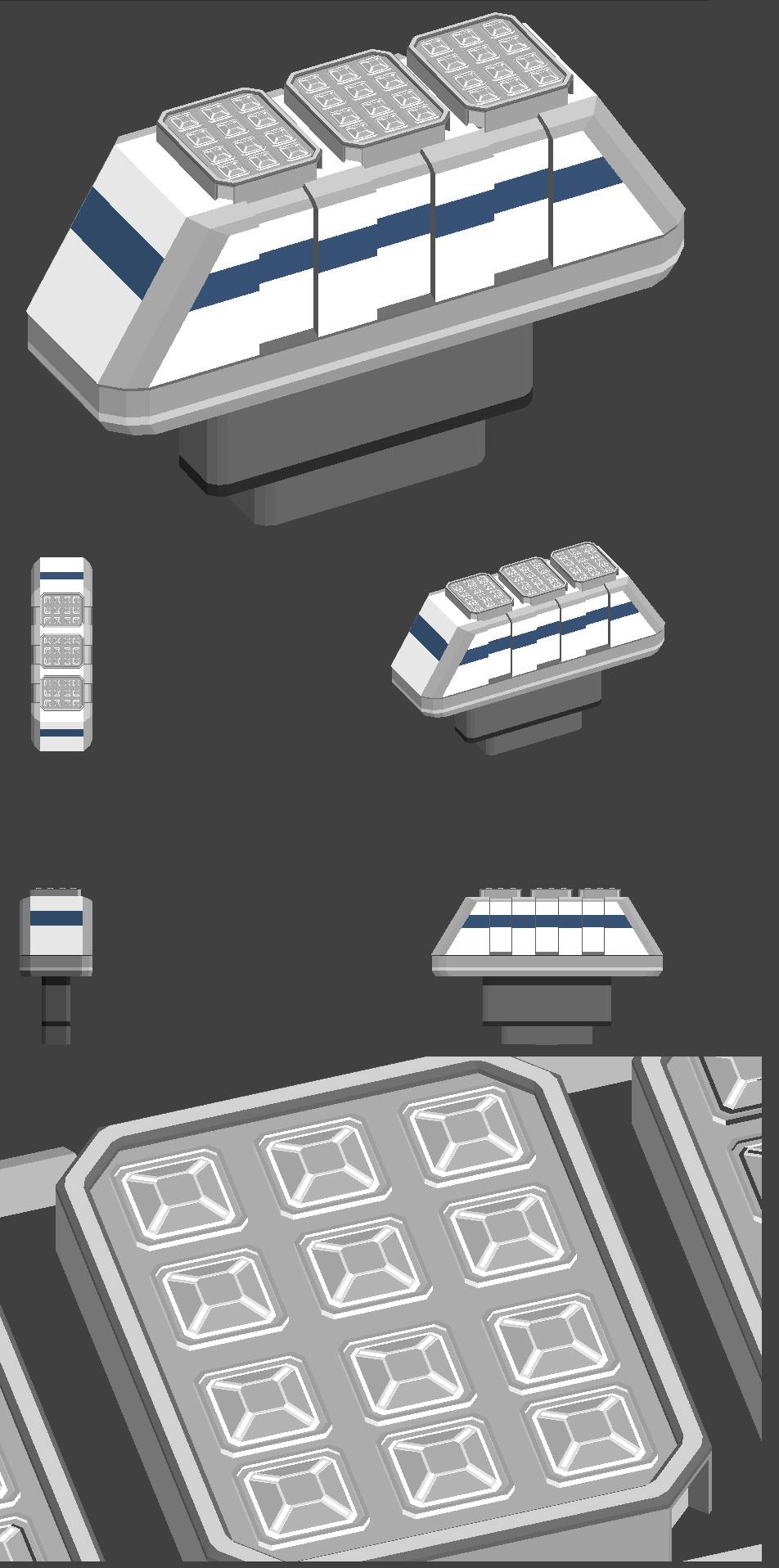
this is the box type, Vertical launch system style "turret" in this case it is a triple mount.If attached to a turret with other weapons the turret for other weapons would be mounted in place of one of the missile launchers.
the "box" would be mounted on the exterior, and the lower portion below the tapered region would be inside the ship to house reload and fire control systems
The fact the system is external to the hull is due to the cat that while turrets take up no internal spaces each launcher holds one ton of missiles.. I imagine in some cases it could be placed between the internal spaces, and the outer hull like a micro-bay.
The pedestal, and loading tunnel could be used by technicians, or repair drones to access a damaged turret and reactivate it. Or carry out routine maintenance when the system isn't being used. All the time staying inside the ships outer shell, protected from micrometeors, and the environment of a jump bubble For situations when they need to do repairs, and routine work, while in jump.
On advanced warships the need to direct warhead seekers into the direction of a target have been largely removed on military, and advanced civilian models. This simplifies the mechanical systems needed by the turret and allows a missile to be launched "off bore" then following its preloaded information. Once in flight the missile can redirect it's flight plan. And then acquire the designated target and then home in on it's target using its internal flight control systems.
The system is designed to hold up to three independent canisters which maintain a constant navigation feed to the missiles warheads, and sequence each missile for launch as needed.A system of lifts and internal handlers can reload each canister as it ready load is expended.This system with the firecontrol, data links, and other systems housed in the base and pedestal is simply mounted on an appropriately reinforced platform on the ships hull, and is available to fire within a short span of time.
Inside the main body of the mount there is a series of clamps and data relay, and power connections, relay each containerized missile into the stack under a quick open hatch. As missiles are fired the individual shipping canister is mechanically ejected. When all missiles are fired fresh missile containers are fed into the launcher through a loading gate on the bottom of the launch canister.
When not loading the missiles the loading mechanism is sealed with heavy armored blast panels to prevent explosions from an accidental detonation from reaching the ships interior and causing a chain reaction detonation of stored ordnance. this system allows rapid reload, without exposing the ships internal spaces to damage if the launcher is detonated by accidents, or hostile fire.


